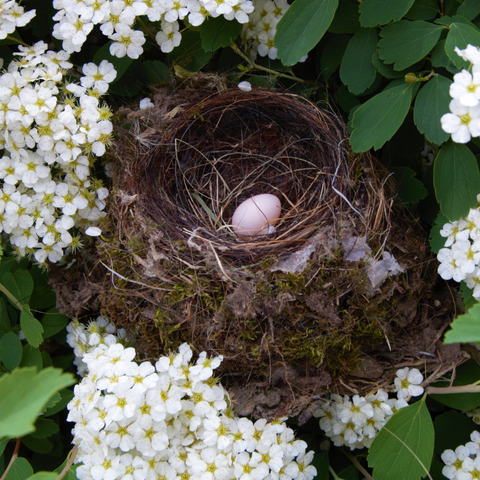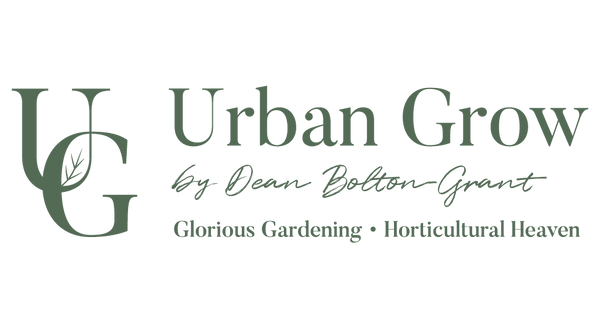Like all animals, birds require a source of water, food and shelter in order to thrive.
Top tips for attracting birds to your garden
Here at Urban Grow we love to see birds in the garden. We're happy to share our top tips for attracting a variety of birds to your garden and how best to keep your wildlife visitors well fed, well watered and sheltered.
Water is easily forgotten when it comes to keeping birds and wildlife thriving in the garden. We think to water our plants but how often do we think to provide water for the birds and bees?
Taking a little bit of time to learn what type of food is best for the birds in your garden is a great way to help birds return to your garden and through food you could potentially attract new species.
Shelter is the last of the three key things you need in order to attract birds to your garden, this can be makeshift or purpose built.
Water bowls for birds
Like all animals, birds need water all year round. In the summer water can be scarce as temperatures rise and likewise, come winter, when temperatures drop, fresh water can be hard to find for the average garden bird.
Hosting a water bowl or pond in your garden will help all bird species and insects thrive in your garden, plus it can make an attractive feature.
A simple water bowl is an easy way to add a source of water to your garden for wildlife to enjoy, seeing birds gather for a wash and a drink can become a relaxing touch point in any garden owner's day. Should you be looking for a bigger water investment, a Corten steel pond could be the answer. These ponds are a modern yet stylish twist on the common garden pond providing all the practical positives of having water in the garden.
Food for garden birds
Birds often struggle to find enough resources. This can be from changes in the seasons and their natural habitat, for example the rise of domestic front gardens being used as car parking spaces has been attributed with the falling numbers of garden birds.
As summer draws to a close and harvests of natural food sources start to dwindle the number of feathered visitors you see in your urban garden during the spring and summer months may suddenly start to dwindle.
However, this need not be the case. No matter how big your garden, allotment, or parking space, it is important to remember that with a little help from humankind those flying garden guests can feel welcome all year round.
When it comes to filling your bird feeders, a high calorie homemade bird feed is the ideal product for providing wild birds with the appropriate nutrition required to comfortably thrive.

Homemade fat balls are a superb method of producing high quality, eco-friendly bird feed that is specifically tailored to suit birds’ dietary needs. Making these at home is also a brilliant activity for young children, and consequently involving them with getting their hands dirty and helping in the garden. Not only is the process fun, but identifying all the native wild birds that come for a visit is a fabulous learning opportunity too!
If you’ve not got the time to prepare your own bird feed, many store bought feeds will be suitable for the diets of the birds in your urban garden.
Urban Grow DIY Fat-balls
What you need:
- Saucepan
- Large bowl
- Wooden spoon
- Ice-cream scoop*
Ingredients:
- Lard, suet or vegetable suet
- Seeds (Garden bird mix, sunflower, maize, millet etc.)
- Currants, sultanas or raisins*
- Unsalted peanuts*
- Oats*
*optional
Method:
- The most reliable method for mixing your fat balls is to use a ratio of one part fat to two parts solid mix. Your solid mix can contain any mixture of bird seed, currants, peanuts and oats, this can be tailored by your choice. Avoid using any fat other than lard or suet, as they can coat feathers, preventing flight, and are also known to spread disease.
- Once you have weighed out your ingredients, in accordance with the 1:2 ratio, place your fat in the saucepan on a low heat and allow to melt. If using lard be sure to cut it into cubes first.
- As the fat just finishes to melt place your seed mix into the saucepan and remove from the heat. Be sure to thoroughly mix the seeds into the fat until all is evenly distributed and all seeds are coated.
- Place the mix into a bowl, cover, and let cool in the fridge.
- Keep an eye on the mix as it begins to cool, once it is starting to solidify and is malleable but not loose, remove it from the fridge and begin to assemble your fat balls.
- An ice cream scoop is ideal for scooping the ideal amount of mixture out to form a single fat-ball, this should be slightly bigger than a golf ball in size.
- Place the fat ball mix into your hand and mould with both hands until you have a smooth, spherical fat ball.
- Once your fat balls are prepared, place in the fridge or freezer until totally set.
- When set, remove from fridge or freezer and store in an air-tight tub or Tupperware until required for use. The fat-balls should last up to a year in a sealed container.
- Hang up anywhere high enough to keep the birds safe from feline predators whilst feeding.
Once you have made and hung up your fat balls you can sit back and enjoy watching and identifying the diverse mix of feathered visitors that will stop by for a snack. For more information on feeding garden birds throughout the year and how to identify them, visit: https://www.rspb.org.uk/birds-and-wildlife/.
Shelter for birds in the garden
Garden birds will thrive if safe shelter is readily available.

You can provide shelter for birds in your garden either through investing in purpose built bird houses or by growing plants and shrubs that are bird-friendly:
- Blackthorn - Prunus spinosa
- Common Beech - Fagus sylvatica
- Common Hawthorn - Crataegus monogyna
- Crab Apple - Malus sylvestris
- Field Maple - Acer campestre
- Guelder Rose - Viburnum opulus
- Hazel - Corylus avellana
- Holly - Ilex aquifolium
- Ivy - Hedera helix
- Rowan - Sorbus aucuparia
- Silver Birch - Betula pendula
- Spindle - Euonymus europaeus
For regular updates on everything we love at Urban Grow visit the Urban Grow Instagram page and sign up to our newsletter. If you have any questions about any of our products contact us here.



